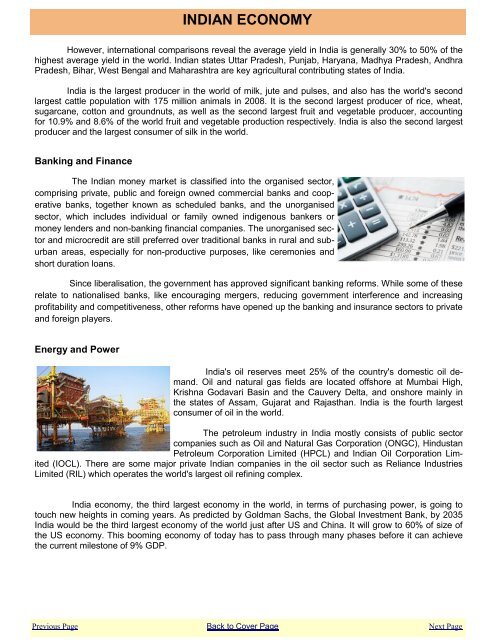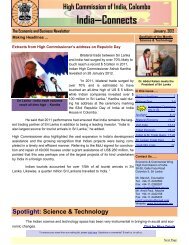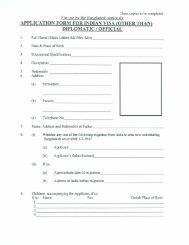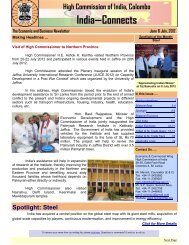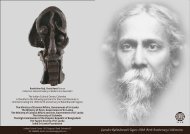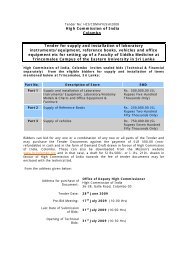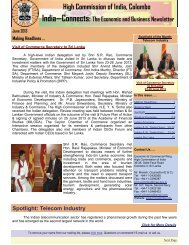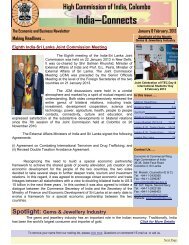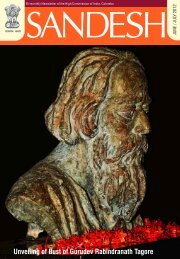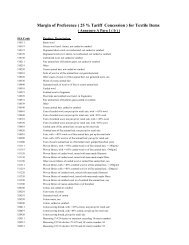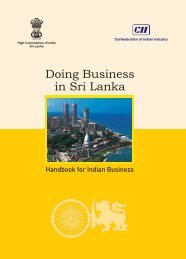IndiaâConnects - High Commission of India, Colombo
IndiaâConnects - High Commission of India, Colombo
IndiaâConnects - High Commission of India, Colombo
Create successful ePaper yourself
Turn your PDF publications into a flip-book with our unique Google optimized e-Paper software.
INDIAN ECONOMYHowever, international comparisons reveal the average yield in <strong>India</strong> is generally 30% to 50% <strong>of</strong> thehighest average yield in the world. <strong>India</strong>n states Uttar Pradesh, Punjab, Haryana, Madhya Pradesh, AndhraPradesh, Bihar, West Bengal and Maharashtra are key agricultural contributing states <strong>of</strong> <strong>India</strong>.<strong>India</strong> is the largest producer in the world <strong>of</strong> milk, jute and pulses, and also has the world's secondlargest cattle population with 175 million animals in 2008. It is the second largest producer <strong>of</strong> rice, wheat,sugarcane, cotton and groundnuts, as well as the second largest fruit and vegetable producer, accountingfor 10.9% and 8.6% <strong>of</strong> the world fruit and vegetable production respectively. <strong>India</strong> is also the second largestproducer and the largest consumer <strong>of</strong> silk in the world.Banking and FinanceThe <strong>India</strong>n money market is classified into the organised sector,comprising private, public and foreign owned commercial banks and cooperativebanks, together known as scheduled banks, and the unorganisedsector, which includes individual or family owned indigenous bankers ormoney lenders and non-banking financial companies. The unorganised sectorand microcredit are still preferred over traditional banks in rural and suburbanareas, especially for non-productive purposes, like ceremonies andshort duration loans.Since liberalisation, the government has approved significant banking reforms. While some <strong>of</strong> theserelate to nationalised banks, like encouraging mergers, reducing government interference and increasingpr<strong>of</strong>itability and competitiveness, other reforms have opened up the banking and insurance sectors to privateand foreign players.Energy and Power<strong>India</strong>'s oil reserves meet 25% <strong>of</strong> the country's domestic oil demand.Oil and natural gas fields are located <strong>of</strong>fshore at Mumbai <strong>High</strong>,Krishna Godavari Basin and the Cauvery Delta, and onshore mainly inthe states <strong>of</strong> Assam, Gujarat and Rajasthan. <strong>India</strong> is the fourth largestconsumer <strong>of</strong> oil in the world.The petroleum industry in <strong>India</strong> mostly consists <strong>of</strong> public sectorcompanies such as Oil and Natural Gas Corporation (ONGC), HindustanPetroleum Corporation Limited (HPCL) and <strong>India</strong>n Oil Corporation Limited(IOCL). There are some major private <strong>India</strong>n companies in the oil sector such as Reliance IndustriesLimited (RIL) which operates the world's largest oil refining complex.<strong>India</strong> economy, the third largest economy in the world, in terms <strong>of</strong> purchasing power, is going totouch new heights in coming years. As predicted by Goldman Sachs, the Global Investment Bank, by 2035<strong>India</strong> would be the third largest economy <strong>of</strong> the world just after US and China. It will grow to 60% <strong>of</strong> size <strong>of</strong>the US economy. This booming economy <strong>of</strong> today has to pass through many phases before it can achievethe current milestone <strong>of</strong> 9% GDP.Previous Page Back to Cover Page Next Page


